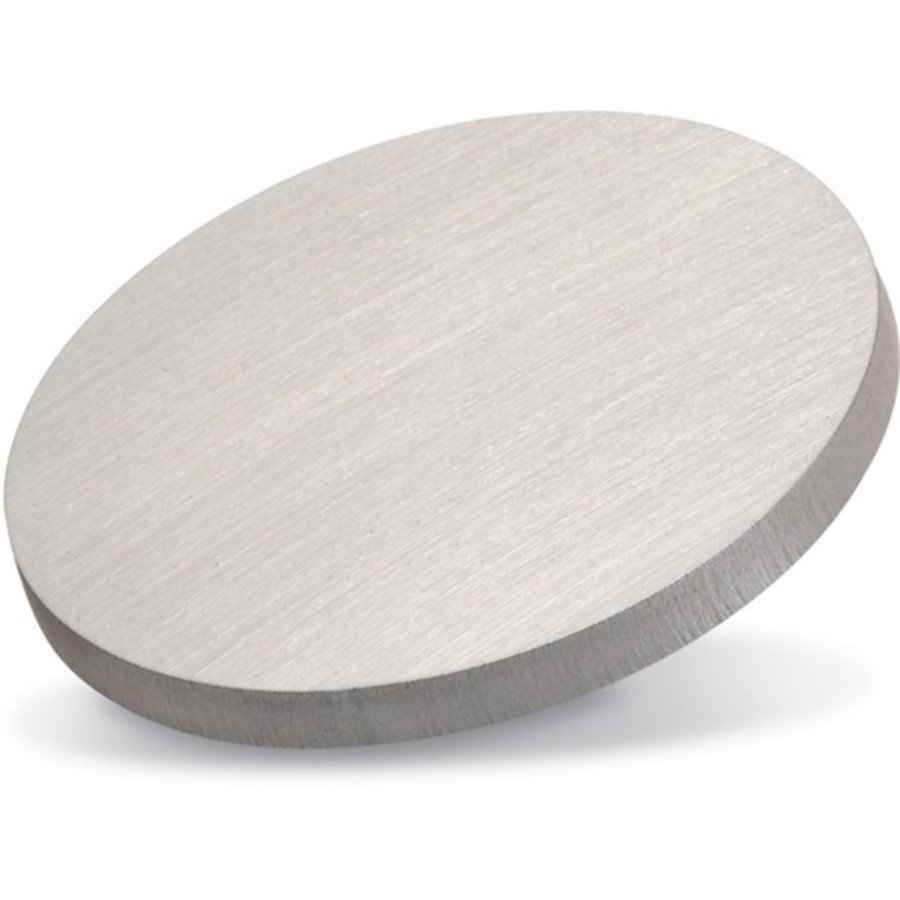Sputtering targets
Sputtering targets are specialized materials used in a thin film deposition technique called sputtering. Sputtering is a key process in the semiconductor and thin film industries, widely employed to deposit thin layers of material onto substrates for various applications, including electronics, optics, and coatings.

Sputtering targets are typically made of pure elemental materials, alloys, or compounds, depending on the desired thin film composition. These targets serve as the source of material to be deposited during the sputtering process. Here’s a brief overview of their key characteristics:
Material Composition: Sputtering targets can be composed of metals, semiconductors, ceramics, or other materials. The choice of material depends on the specific properties and applications required for the thin film.
Shape and Size: Targets come in various shapes, such as discs, rectangles, or custom designs, and are often made to fit the dimensions of the sputtering equipment used. The size and shape affect the uniformity and thickness of the deposited film.
Purity: High purity is crucial for sputtering targets to ensure the deposited thin films have consistent properties. Impurities can negatively impact the performance of the thin film.
Bonding: Targets are usually mounted onto a backing plate or holder using various methods like indium bonding or elastomer bonding. This bonding ensures good thermal contact and efficient sputtering.
Target Lifespan: The lifespan of a sputtering target depends on factors such as sputtering conditions, material erosion rates, and target quality. Target replacement is necessary when the target becomes depleted.
The key features and benefits sputtering targets:
- Material Versatility: Sputtering targets can be made from a wide range of materials, including metals, semiconductors, ceramics, and compounds. This versatility allows for the deposition of a variety of materials to meet specific application requirements.
- High Purity: Sputtering targets are manufactured with high levels of purity, which is essential for producing thin films with consistent and reliable properties. Low impurity levels ensure the integrity of the deposited material.
- Customizable Shapes and Sizes: Targets come in various shapes and sizes, allowing for customization to fit different sputtering equipment and substrate dimensions. This flexibility ensures uniform film deposition and efficient material usage.
- Target Longevity: The lifespan of sputtering targets can be extended through careful selection of materials and optimized sputtering parameters. Longer target life reduces downtime and replacement costs in manufacturing processes.
- Efficient Material Utilization: Sputtering is a highly efficient process that minimizes material waste. Target material is sputtered from the target surface and deposited onto the substrate, resulting in minimal material loss.
- Precise Control: Sputtering offers precise control over film thickness, composition, and properties. This level of control is crucial for producing thin films with specific characteristics, such as optical coatings or semiconductor layers.
- Compatibility with Various Substrates: Sputtering targets can be used with a wide range of substrate materials, including glass, silicon, metals, and ceramics. This versatility makes sputtering suitable for diverse applications.
- Wide Range of Applications: Sputtering targets find applications in numerous industries, including semiconductor manufacturing, photovoltaics (solar cells), data storage, optics, and automotive coatings. They are essential for producing functional and protective thin films in these fields.
- Consistency and Reproducibility: Sputtering processes offer excellent film uniformity and reproducibility. This consistency is vital for industries that require precise control over film properties.
- Environmentally Friendly: Sputtering is a relatively clean and environmentally friendly thin film deposition method. It produces minimal hazardous waste compared to other deposition techniques.
In conclusion, sputtering targets possess a range of characteristics and advantages that make them indispensable in thin film deposition applications. Their versatility, purity, and customization options, along with the precise control they offer, contribute to their widespread use in various industries for creating high-quality thin films.
